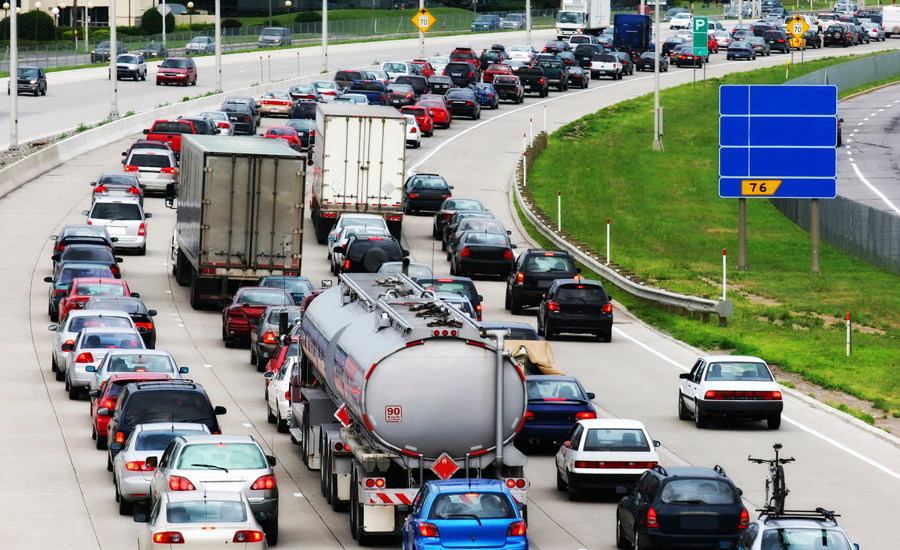Many of us already drive personal or company vehicles with automated features such as lane departure warning and automatic emergency braking. While automation clearly improves safety, it also presents new issues for safety professionals. Companies need to integrate policies on vehicles with automated features into their current fleet safety management systems. They also need to consider how they’ll manage the more highly-automated vehicles that will be available in the future.
To help safety professionals address these challenges, the American Society of Safety Professionals (ASSP) published the ANSI/ASSP Z15.3 technical report, Management Practices for the Safe Operation of Partially and Fully Automated Vehicles. The report provides guidance for companies to help their workers stay safe on the road as technology advances, and to think ahead to what fully-automated vehicles – true “self-driving” cars – will mean for their fleet safety management practices. The Z15.3 technical report supplements the ANSI/ASSP Z15.1 – 2017 standard, Safe Practices for Motor Vehicle Operations, which remains the comprehensive fleet safety management standard for the nation. NIOSH was a major contributor to the Z15.3 technical report, and is also represented on the Z15.1 standards committee.
Safer vehicles are available now
Many vehicles on the market are equipped with advanced driver assistance systems (ADAS), many of which show clear safety benefits. Some ADAS detect traffic hazards or potential collisions and warn the driver, while others can take momentary control of the vehicle’s steering, braking, or acceleration to prevent a collision. One example of ADAS is adaptive cruise control, which adjusts cruise speed if your vehicle gets too close to the vehicle in front of it. Remember: ADAS can only control certain vehicle functions, and only when a problem arises. Vehicles with ADAS are never “self-driving.” The human driver is always responsible for monitoring the road and controlling the vehicle.
Company drivers need to understand automated safety features
Workers who drive company cars with ADAS may have personal vehicles with no automation at all, so it’s important for them to understand what to expect from ADAS. There’s a big difference between forward collision warning (FCW), which warns that your vehicle is getting too close to the vehicle in front of it, and automatic emergency braking, which takes the information from FCW and applies the brakes to prevent a collision.
As with any workplace safety issue, the employer and worker each have responsibility for safe operation of vehicles with automated features. The employer is responsible for keeping vehicles in safe operating condition and training drivers to understand the capabilities of automated features on the vehicle they’re about to drive – what these features can and cannot do. On the other hand, drivers are responsible for following all company policies related to use of vehicles with automated features and to seek more information about how the technologies operate if they’re uncertain. Mycardoeswhat.org is a great source of information on how different ADAS features operate.
Companies need to be aware of changes to laws and regulations as automation progresses
As vehicle automation advances, some states may require a special license endorsement to operate a highly-automated vehicle. There could be changes to commercial driver’s license requirements for truck and bus drivers. There will undoubtedly be questions about data collected by automated driving systems and liability. Who owns these data and who should have access to it if there’s a collision? Should there be standards for consistent data collection across all manufacturers? Who’s liable if there’s a collision? Is it the vehicle manufacturer, the technology developer, the driver, the employer, or some combination of these? We can’t predict how these questions might be resolved; it may be through regulation or through litigation.
Self-driving vehicles hold great promise, but company policies will have to keep up
Self-driving vehicles are expected to greatly reduce crashes and injuries by eliminating human error, which is implicated in over 90% of crashes. Although the technology is now being tested, it will be many years ‒ even decades ‒ before self-driving vehicles become commonplace. But, as the technology advances, company safety policies will need to keep up with those advances. For example, it will be important to have procedures to maintain and update complex automated-driving software according to manufacturers’ specifications, and to be sure that workers understand how updates to their vehicles will work. Also, if there is a collision – and there will continue to be collisions – post-collision reviews should analyze data elements related to performance of the automated driving system.
The bottom line: Take advantage of ADAS-equipped vehicles now on the market, and prepare for self-driving vehicles
Vehicles with ADAS are in our fleets now. It’s time for fleet safety managers to review their processes to make sure they’re getting the most benefit out of these life-saving technologies. The Z15.3 technical report can help with this. It’s important to recognize that in spite of all the hype, self-driving vehicles are many years away, and even then, they won’t necessarily be the magic bullet that will eliminate all crashes or crash-related injuries. Fleet safety management may look different when self-driving vehicles are widely available, but companies will always need policies to protect workers who drive on the job.
Click here to visit this blog post on the NIOSH website and leave a comment.




